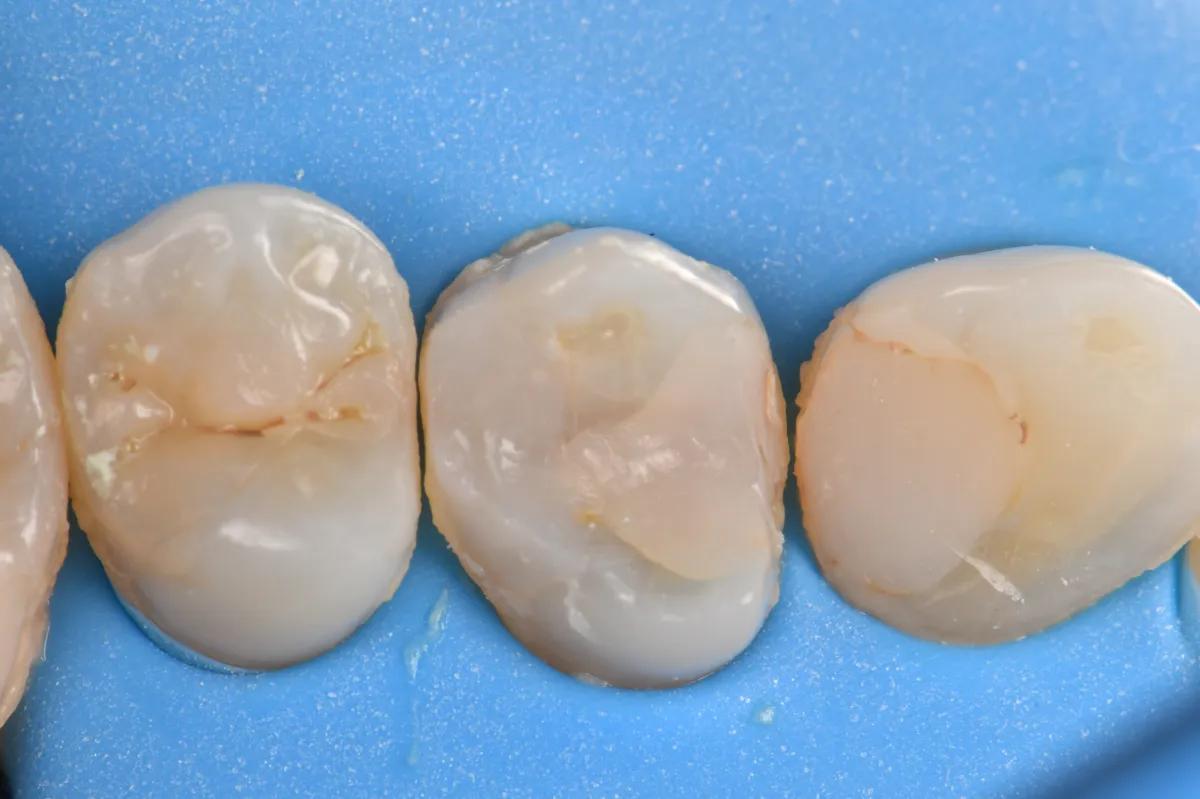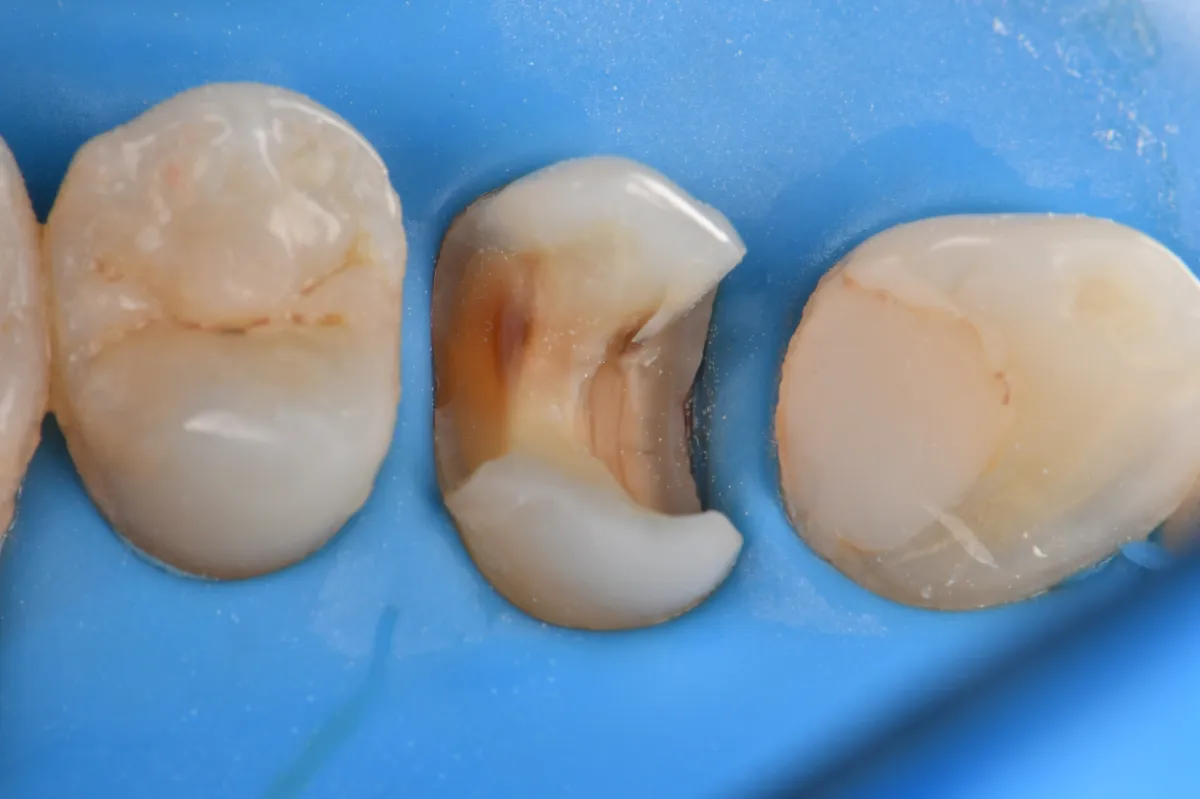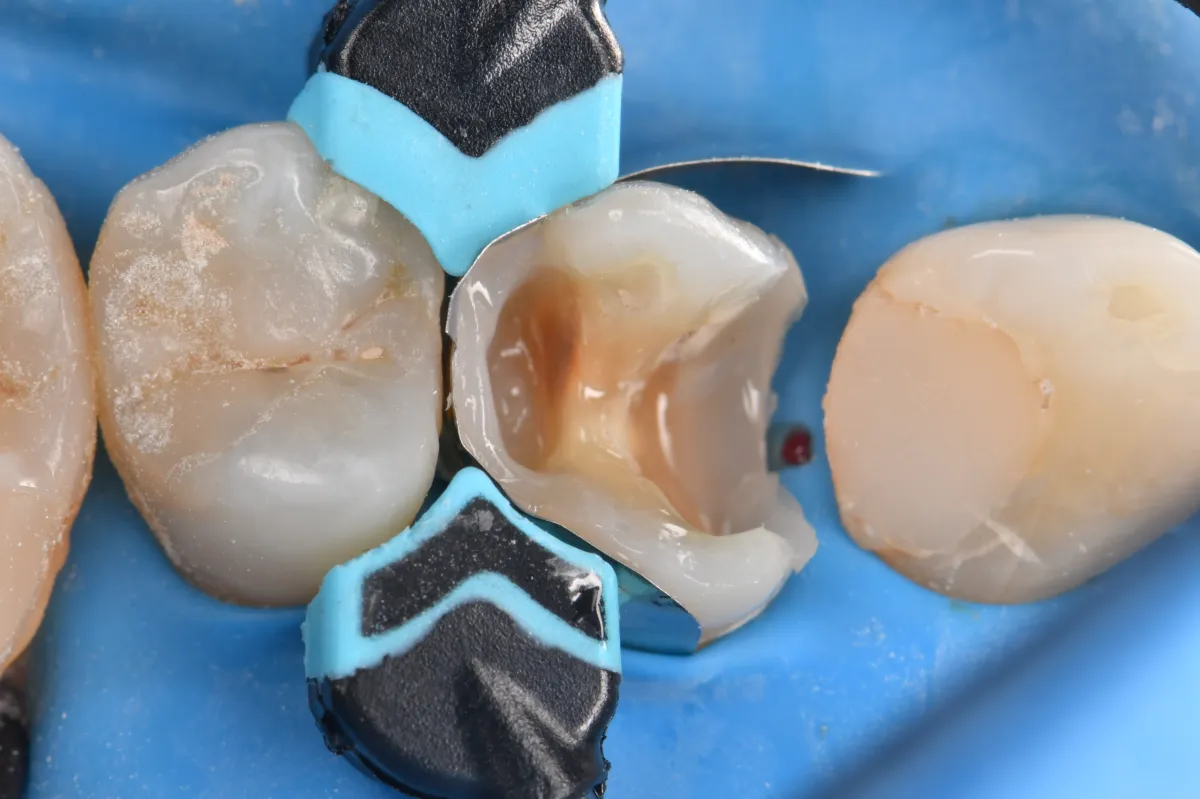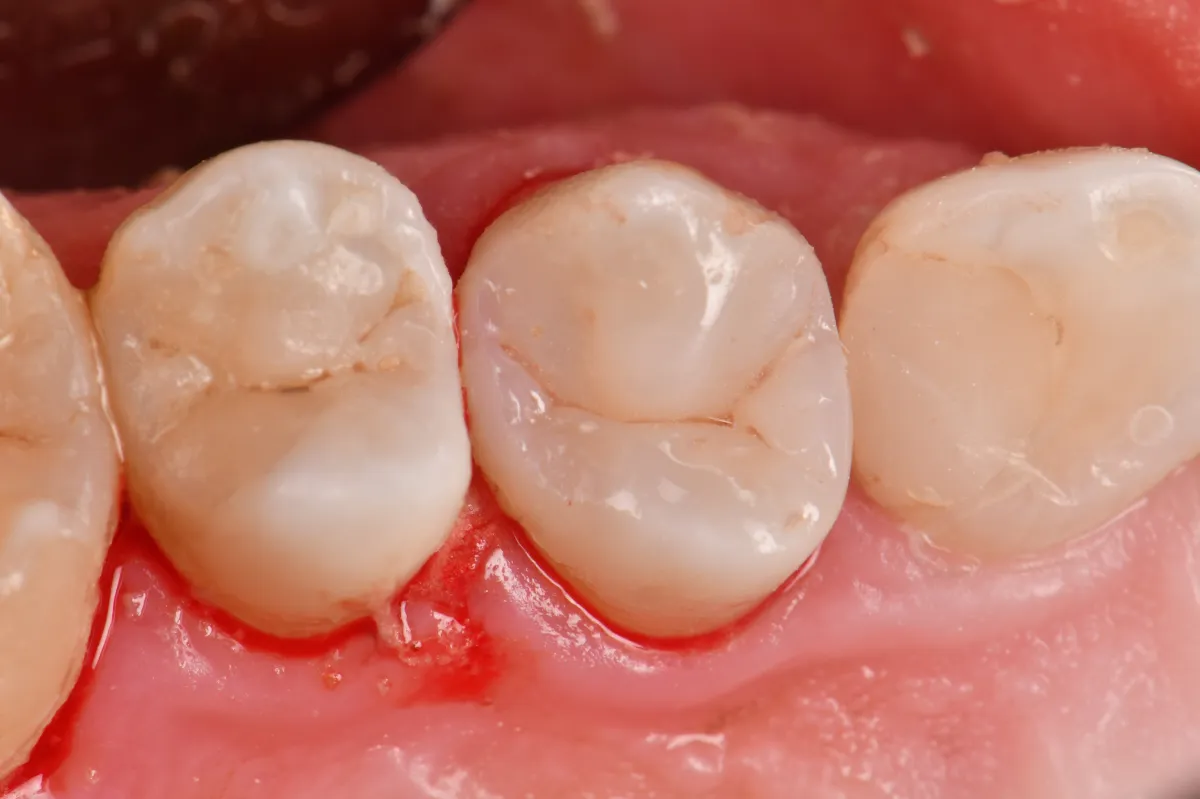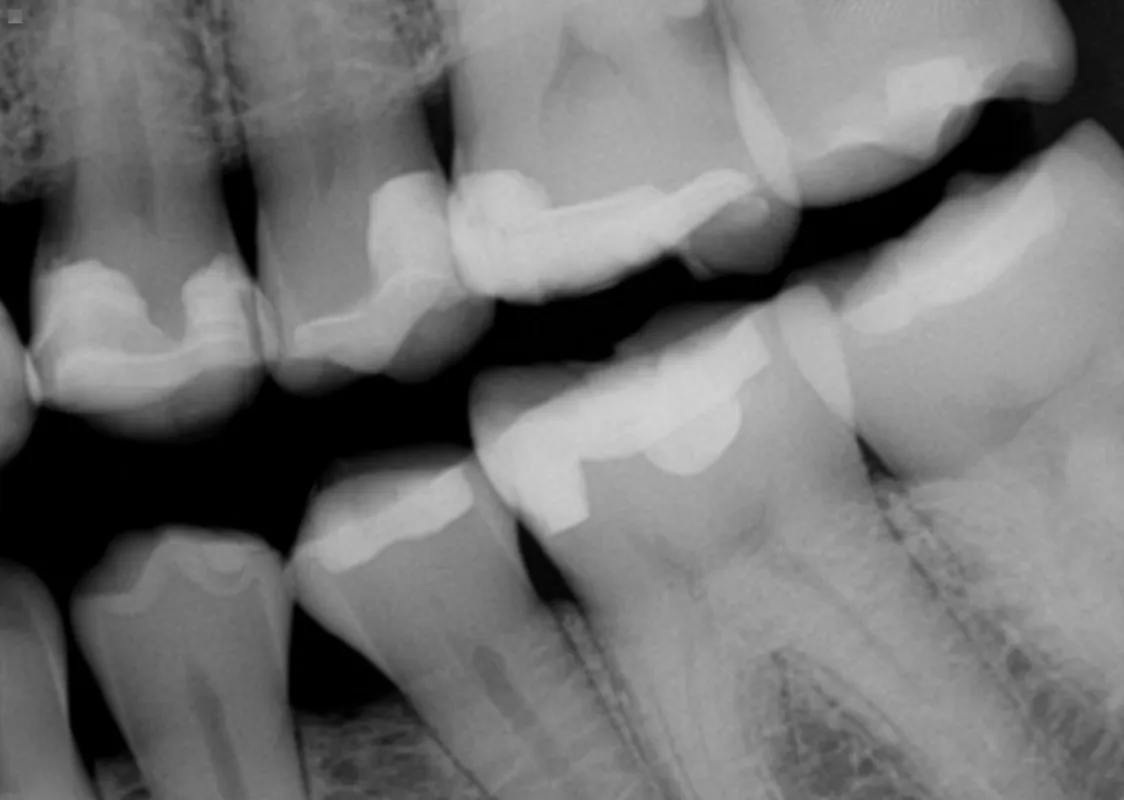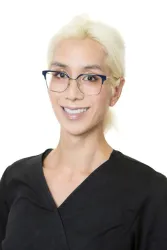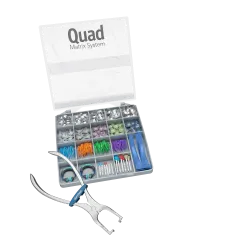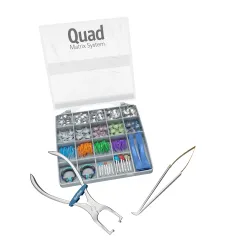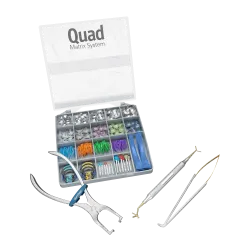A 41 year old ASA I female maintaining controlled iron deficiency anemia presented to the practice exhibiting a mesial marginal ridge fracture on tooth #13M with existing MOD composite restoration. This tooth also featured an open contact on both mesial and distal aspects which was responsible for chronic food impaction. Radiographically, the restorations were deep pulpally and gingivally especially on the mesial aspect, but did not have any evidence of pulpitis.
Background
Procedure
The patient was anesthetized using 1 carpule of 2% Lignocaine with 1:100,000 epinephrine and a rubber dam affixed to isolate the quadrant. The old composite was excavated and a hairline fracture on the mesiogingival floor dissected to a subgingival extent. The preparation was subjected to micro air particle abrasion using 29 micron aluminum oxide (Aquacare). A circumferential matrix was secured to complete a deep margin elevation (DME) procedure (2) which would then allow for predictable placement of a sectional matrix to re-create the contact area. The enamel was etched for 10 seconds and the dentin for 12 seconds prior to copious water irrigation. A 2% chlorhexidine solution was applied vigorously to the dentin surface to disinfect the surface and rewet the surface simultaneously. The side benefit of using chlorhexidine is its inhibitory action on matrix metalloproteinases and cysteine cathepsins. A 5th generation total etch adhesive was then applied as per manufacturer instructions (Peak Universal Bond, Ultradent Products) and the mesioproximal box microlayered
with increments no thicker than 0.25-0.5mm horizontally for the first 5 minutes (1). At this stage, the DME procedure was complete and the matrix removed, making way for the placement of the secondary sectional matrix system (3. Garrison Quad Matrix), which would work to re-create ideal proximoaxial contours and contact points with the adjacent teeth,
minimizing overhang formation with a supreme cervical seal from the tension ring-induced adaptation of the bifid wedge design against the tooth. The distal marginal ridge was completed prior to the mesial wall, thus converting a Class II situation into a Class I. The occlusal was restored using a combination of Majesty Flow in shade A2 (4. Kuraray Noritake Dental) and Voco Grandio SO A2, a well known supercomposite. The fissure detail was stained using a light brown tint (Final Touch, Voco). Featuring a compressive strength of 439MPa, this material exceeds the physical limits of both enamel (384MPa) and dentin (297MPa) and closely matches the elastic modulus of dentin. As always, in adjusted final occlusion (5), it is imperative to only have centric occlusal contacts and no lateral excursive functional interferences to avoid placing the restoration in tension or flexion, which is the Achilles heel of composite resin as a material.
Considerations
Micro particle abrasion is always completed prior to sectional or circumferential matrix placement as the roughness produced by the abrasion paired with the use of 10-MDP-containing adhesive monomers can lead to a very strong and often indelible bond between metal and composite, which makes for difficulty in matrix removal. A metal strip is often used to protect the adjacent tooth during the air abrasion procedure. Deep marginal elevation creates an accessible restorative margin, often obviating the need for crown lengthening.
Reference
1) Nikolaenko SA, Lohbauer U, Roggendorf M, Petschelt A, Dasch W, Frankenberger R. Influence of c-factor and layering technique on microtensile bond strength to dentin. Dent Mater. 2004 Jul;20(6):579-85.
2) Samartzi TK, Papalexopoulos D, Ntovas P, Rahiotis C, Blatz MB. Deep Margin Elevation: A Literature Review. Dent J (Basel). 2022 Mar 14;10(3):48.

